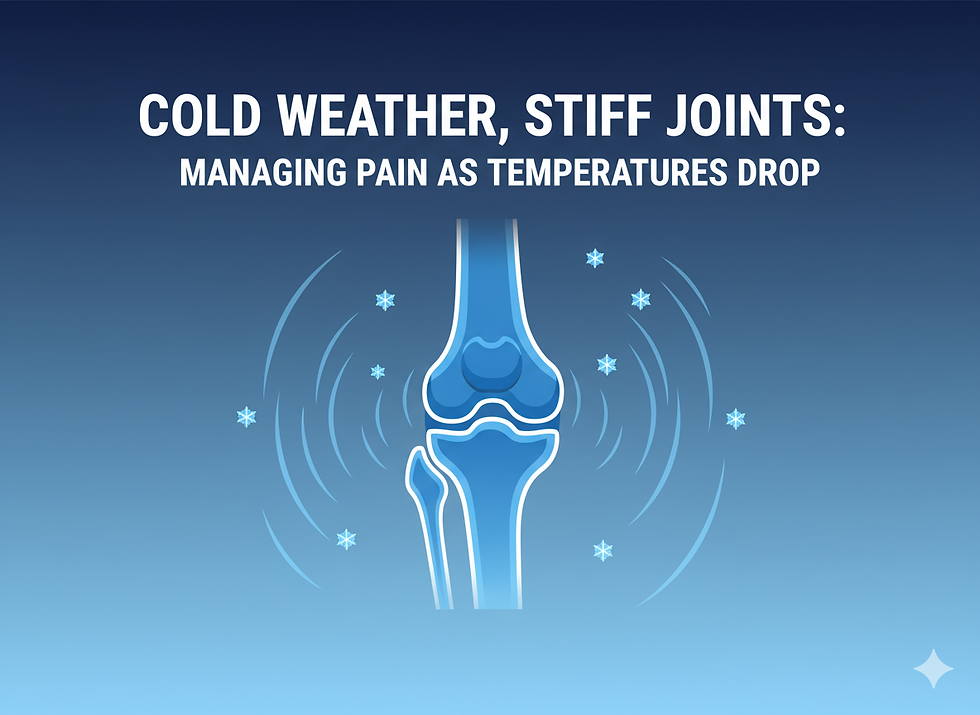Headaches or migraines? How physiotherapy can help
- K-Town Physio

- Oct 31, 2023
- 2 min read
Updated: Jan 18, 2024

Headache vs migraine: What’s the difference?
People who have headaches often complain of a band of pain across their forehead, or pressure on either side of the head. The pain is tiring, but not as severe as migraine pain. Migraines can be described as a neurological disease that involves nerve pathways and chemicals that usually causes severe pain on one side of the head. In addition to severe head pain, migraine sufferers may experience some or all of the following symptoms:

Nausea
Increased sensitivity to light, sound, or smells
Dizziness
Extreme fatigue
Migraines can also be accompanied by auras (less common): sensory disturbances that affect a person’s vision, touch, or even speech.
Common causes of headaches/migraines
Common causes for headaches/migraines include vasodilators (eg, Nitroglycerin), skipping meals, weather changes, sleep deprivation, stress, excessive afferent stimuli (eg, flashing lights, strong odors), hormonal factors, etc. Although research regarding physiotherapy for the treatment of headaches/migraines is limited, migraineurs can still benefit from physiotherapy intervention. Some musculoskeletal causes for headaches/migraines include head trauma, neck pain, and/or temporomandibular joint dysfunction. In particular, the pericranial muscles can be the cause of migraine and will/can be tender during a migraine attack. There may also be changes in sub-occipital and paraspinal muscle tone and underlying cervical dysfunction between migraine episodes. Although the cervical spine may be a contributing factor/trigger for headaches/migraines, we must emphasize the importance of the examination of the masticatory system in headache sufferers. It is shown that, in the literature, the prevalence of temporomandibular dysfunction within the headache population ranges from 45-75%. Temporomandibular joint (TMJ) dysfunctions are defined as a cluster of symptoms and signs involving the masticatory muscles, the TMJ, or both.
How can physiotherapy help?
The above mentioned musculoskeletal causes can be addressed through physiotherapy by the use of manual therapy, specific exercise training (including, stretching, strengthening, and self-distraction), education, and modalities to decrease the frequency/onset of the attack and duration/intensity of the attack.
A physiotherapist can assess a number of factors that may contribute to headaches and migraines such as range of motion, accessory joint movement, muscle tightness/trigger points, muscle strength, and more.
Treatment
Manual therapy
Manual therapy techniques (such as cervical and TMJ mobilisations) have been shown to be as effective as some drugs in the prophylactic management of migraines. It has also been shown to decrease pain intensity and reduce the number of migraine days, as well as working disability, and partly on the improvement of health-related quality of life. In addition, soft tissue release and massage techniques have been shown to reduce pain intensity by up to 71%.
Acupuncture
Although evidence for acupuncture as a treatment for headaches and migraines is controversial within the literature, it has been shown in several studies to be an effective adjunct to physiotherapy in reducing pain intensity, reducing the number of attacks per month, as well as decreasing the use of pharmaceuticals.
Exercise therapy
Aerobic exercise, cervical spine strengthening and range of motion exercises, as well as TMJ exercises have all been shown to decrease pain intensity, reduce the number of attacks per month, as well as increase quality of life. Some exercises to address the jaw and/or neck that may be helpful include:


Written by: Chelsey Lafontaine



